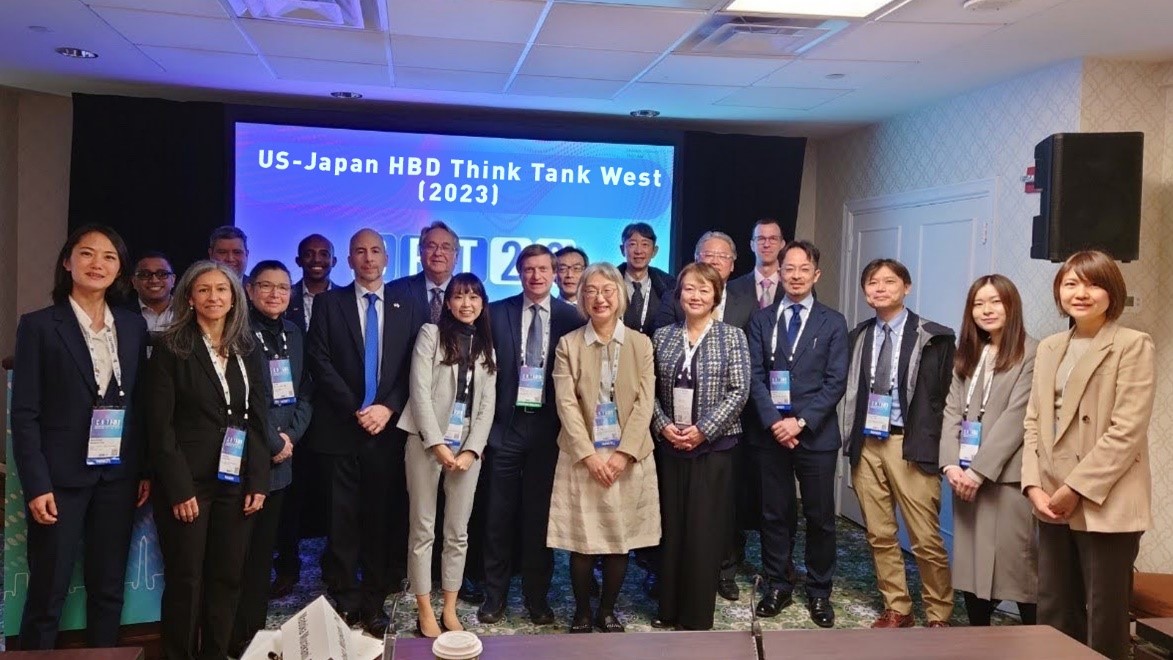U.S.-Japan Regulatory Collaboration
The FDA’s Center for Devices and Radiological Health (CDRH) recognizes the importance of globally harmonized medical device regulatory policy and practices. This page explains how the FDA collaborates with stakeholders in Japan through the Harmonization by Doing (HBD) initiative, and provides information on programs, resources, and accomplishments.
Through HBD-led projects, U.S. and Japanese regulators (including the FDA), academia, and industry collaborate regularly to promote regulatory convergence and address barriers that may delay patients in both countries from getting timely access to safe and effective medical devices.
On This Page
- Global Cardiovascular Device Clinical Trials
- Pediatric Medical Device Development
- Scientific Sessions and Think Tanks
- Accomplishments
- Contact HBD and Learn More
- Resources and Publications
Global Cardiovascular Device Clinical Trials
Many HBD projects focus on moving U.S. and Japanese clinical study sponsors and regulatory agencies toward the use of a single, global clinical trial protocol for evaluating the performance of cardiovascular devices rather than parallel or separate country-specific protocols. This means that the FDA may accept data from Japanese clinical studies using the single global protocols.
Single clinical trial protocols can:
- Reduce the time and resources needed for the FDA and Japanese regulatory authorities to evaluate device performance compared to country-specific clinical studies.
- Improve the timeliness and cost-effective generation of more informative clinical datasets for pre-market, and potentially post-market, medical device performance evaluation in both the U.S. and Japan.
- Lead to more timely access to innovative devices for patients, and in particular patients with unmet medical needs.
Medical device developers are encouraged to discuss their single-protocol clinical study approach with both the FDA and Japanese regulatory authorities. You may request feedback from the FDA through a Pre-Submission.
Pediatric Medical Device Development
Developing pediatric medical devices can be challenging. Some pediatric health disorders are rare, and this can make it difficult for medical device developers to perform studies to show their pediatric medical devices are safe and effective.
In recognition of these challenges, HBD initiated an “HBD for Children” program. In this program, U.S. and Japanese participants work together to promote the development of cardiovascular pediatric medical devices and streamline the process of evaluating them.
The strategies pursued so far include:
- Identifying less burdensome ways of performing clinical studies of pediatric devices,
- Facilitating aligned U.S.-Japanese regulatory approaches, and
- Fostering engagement with academia and small manufacturers.
Scientific Sessions and Think Tanks
HBD organizes scientific sessions in conjunction with annual clinical and regulatory conferences in the U.S. and Japan, such as those listed below:
- Cardiovascular Revascularization Therapies (CRT)
- Japan Endovascular Treatment (JET)
- Japanese Association of Cardiovascular Intervention and Therapeutics (CVIT)
- Pediatric Interventional Cardiovascular Society (PICS)
- Regulatory Affairs Professionals Society (RAPS)
- Transcatheter Cardiovascular Therapeutics (TCT)
- Vascular InterVentional Advances (VIVA)
HBD also organizes stand-alone “Think Tanks” to discuss emerging issues in medical device development and access, such as pediatric device development, use of real-world clinical evidence, and regulation of digital health technologies.
Accomplishments
- The Harmony Transcatheter Pulmonary Valve (TPV) System is an example of a medical device that was part of a HBD collaboration involving clinical trials. The TPV System is intended to improve blood flow to the lungs in patients with severe pulmonary valve regurgitation without open-heart surgery and was FDA-approved on March 26, 2021.
- In the U.S.-Japan Collaborative Consultation and Premarket Review Pilot Program (2009-2012), cardiovascular device developers seeking to market their devices submitted clinical study protocols and data for joint review by the FDA and Japanese regulators. The outcomes were:
- More robust clinical studies with greater ethnic diversity and more robust safety and effectiveness data.
- Medical device developers learned more about the premarket review processes in the U.S. and Japan.
- The U.S.-Japanese Registries and Synergistic Postmarket Surveillance Working Group focused on making the information in postmarket data registries more consistent and on reducing premarket submission data requirements by using postmarket data.
- The group contributed to creation of The Japanese Registry for Mechanically Assisted Circulatory Support (J-MACS) registry was modeled after the U.S. Interagency Registry for Mechanically Assisted Circulatory Support (INTERMACS) registry.
- These registries are designed to advance the understanding and use of mechanical circulatory support for improved treatment of patients with end-stage heart failure.
Contact HBD and Learn More
If you are interested in becoming involved with HBD activities, contact the HBD secretariat at hbd.contact@pmda.go.jp.
- HBD brochure (PDF, 434 kb)
- Summary of HBD activities (in Japanese or English translation)
Resources and Publications
- CDRH International Programs
- Global medical device clinical trials involving both the United States and Japan: Key considerations for development, regulatory approval, and conduct, Cardiovascular Revascularization Medicine, July 2023, 52:67-74
- Japan-USA Orbital Atherectomy for Calcific Coronary Lesions: COAST Study, Harmonization by Doing Proof-of-Concept, Cardiovascular Revascularization Medicine, April 2022, 37:112-117
- Partnership Between Japan and the United States for Early Development of Pediatric Medical Devices - Harmonization By Doing for Children, Circulation Journal, April 2020, 84:786-791
- Design Strategies for Global Clinical Trials of Endovascular Devices for Critical Limb Ischemia (CLI) - A Joint USA-Japanese Perspective, Circulation Journal, August 2018, 82:2233-2239
- Regulators Compare US, Japan Approaches To Digital Health, MedTech Insights, March 2, 2023

